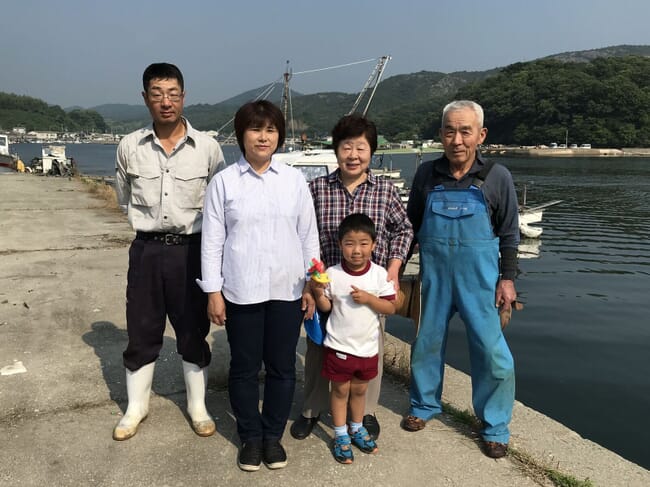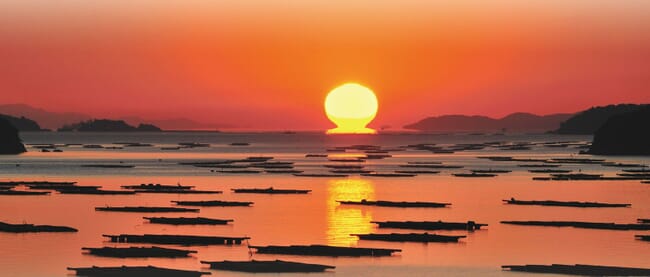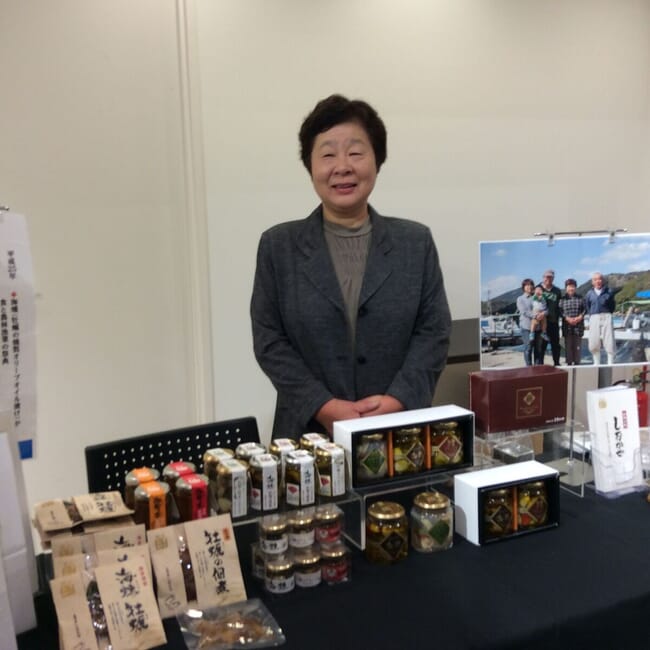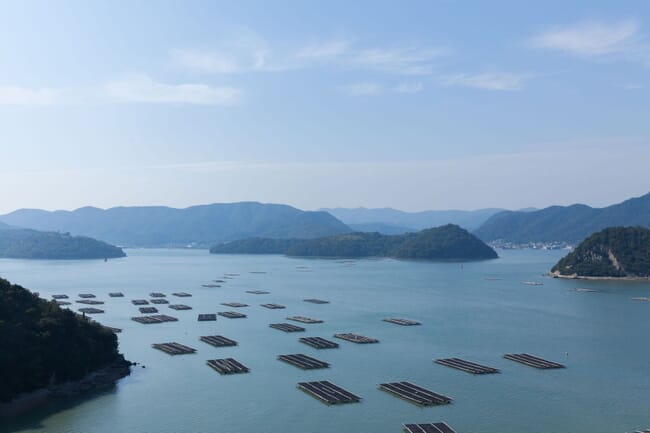The shallow coastal waters of Japan’s Seto Inland Sea have been home to oyster farming since the 16th century. Oysters thrive thanks to a sea full of nutrients and freshwater runoff from the surrounding mountains. A staple of Japan’s winter diet, oysters are traditionally eaten grilled, steamed with rice or added to stews.

The port town of Mushiage, Okayama Prefecture, is in the centre of this oyster-farming region. Atsuko Nozaki has been rearing oysters there for the past 46 years, after marrying an oyster farmer and becoming part of Kaki no Ie Shiokaze, a family-operated fishery that began farming oysters around 1951. Today she produces and sells a variety of products at local markets and shops that celebrate the region’s marine produce.
Describe a typical day in your current role
My role has changed quite a bit, especially over the last 10 years. Before, I was very much involved in the actual work of farming oysters, such as placing nets on the surface of the ocean, bringing them back to shore, cleaning them, sorting them and removing the flesh from the shells. Today, because my son has now taken over the running of the business and most of that work, I go out to sea a lot less. Instead, I make and sell a range of oyster products, such as ajillo, smoked oysters in olive oil and boiled oysters. I sell these throughout the year, mainly at local shops, markets and kiosks in train stations and airports across Japan. Due to price competition and other factors, oyster farming in our prefecture has been declining slowly, so we set up a processing factory to produce our own goods and ensure that things could continue in some way.

What’s the most memorable experience you’ve had working in aquaculture to date?
One experience I am particularly proud of was when several of our signature products, including oyster ajillo and oysters cooked with mushrooms, were given the top award in a contest that was hosted by the agriculture ministry. The contest was held on 1 November 2014. We came top out of over 880 products that were submitted from across Japan, and our products were featured in Expo Milano 2015.
What’s the most unusual experience you’ve had in aquaculture?
People from the big cities such as Tokyo often tell me that when they think of oysters they think of other regions, and associate my region more with other produce like fruit. I find that unusual because oysters are so famous where we are. It’s something that really hits me when I’m selling our products: that despite everything we do to publicise our work, Okayama’s oysters are still not that well known in Japan. It could be a sign that we need to do more!
How important are sustainability concerns to you and how do you address them in your work?
They’re extremely important to us. We have been operating and making a living across seven generations, and today my 38-year-old son is running the business and is working hard to ensure that it’s viable with good long-term prospects. We ensure that we are socially responsible and contributing to our community by shipping our products to local fisheries associations for sale and selling them directly to local customers.
What new technical or product innovation do you think has the most potential to change aquaculture?
Any technology or machinery in aquaculture has huge potential. These have developed massively over the last 50 years or so and can bring great benefits, such as improving the growth and survival rates of particular species, offering protection from predators or minimising the risk of disease. For us, a lack of staff is quite a significant issue, so we would love to see some new technology or machinery, like robots, that could remove the oyster flesh from their shells for us!

Are there any individuals or organisations in aquaculture who you’ve found particularly inspirational?
I am most inspired by a primary-school teacher called Mr Toshio Inomata. He was the first to help publicise and spread the word about oysters in this area. In January 1926, he graduated from a fisheries school in Niigata Prefecture off the Sea of Japan coast and came to work here in a local primary school. Sadly, he passed away from illness at the age of 30.
He saw how poor the fishing villages around here were, and he wanted to do something to improve and modernise them. He began by giving a talk in our area on how we could focus more on “rearing” fish rather than “catching” them. This generated a lot of support from the pupils and local people. I think he created a huge feeling of hope – that things could improve if people worked hard and tried something completely different. That inspired the fisheries to keep going.
Have you faced any particular challenges as a woman in aquaculture?
My husband and son are the ones who go out to sea, while I stay on land to make and sell our oyster products. Some older men in the region had never seen the wife of an oyster farmer go out in public and do something different from the usual hands-on work of aquaculture, such as staying on the farm cleaning the nets. My job of selling oyster products to the public was seen as out of tune and different from people’s expectations. I have been criticised for being featured in local newspapers before.
Now things are different because our products have been on TV and been sold at stations, airports and shops across the country. Local people are much more encouraging and buy our products more often.
How are women addressing inequalities in aquaculture in your region and have you seen the opportunities improve in recent years?
When it comes to inequality, women in this region don’t tend to speak out. Oyster aquaculture is still very much centred on men, so women feel that their only option is to accept the situation. The lack of people working in this industry is a problem, but to address it, [male] interns and staff from countries such as China and Vietnam are hired instead, rather than women. The number of people working in aquaculture, including women, is sadly declining in our region.
What advice would you give to women looking to start a career in the aquaculture sector?
I can only speak for those who have married into an aquaculture business. I would say that even if your farm hires interns and other people, as the wife, you must be at the centre of the work that goes on and be prepared to work hard, otherwise your farm’s profits won’t go up. It’s also worth remembering that the work may be hard for women – it begins early in the morning, there may be children to look after and there is no time off.

What would be your dream role in aquaculture and do you think it’s realistic to achieve?
My ideal role would be to revitalise depopulated fishing and aquaculture towns such as mine, further develop the oyster aquaculture industry and improve employment conditions and working hours. Unfortunately, however, these will be difficult to achieve unless we can increase the prices of our products and make some money that could help us towards such goals.
What has been the aquaculture industry’s greatest accomplishment in recent years?
Although the number of individual workers is declining, aquaculture firms are now able to farm on a large scale. As a result, the supply of products from aquaculture is rising and I think that’s a huge accomplishment for the industry in general.
What outstanding challenge would you most like to solve?
At the moment we have very little to no communication or support from the national government and it’s impossible to contemplate any further development in our sector. I would like to help address this, for example by creating a platform in which young people can communicate more freely with aquaculture-related institutions.








